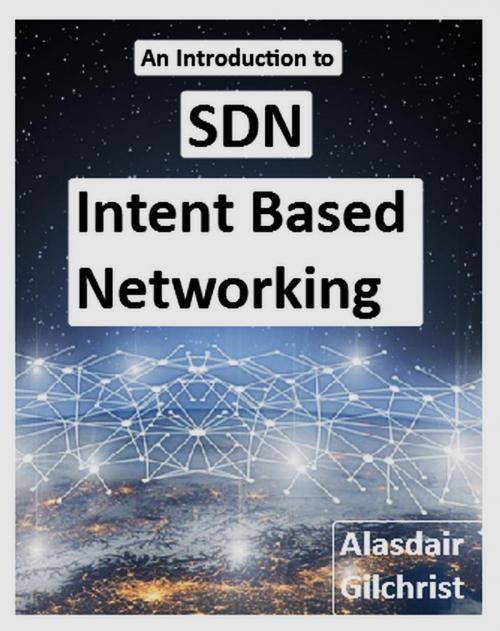An Introduction to SDN Intent Based Networking
Nonfiction, Computers, Advanced Computing, Artificial Intelligence, Information Technology| Author: | alasdair gilchrist | ISBN: | 9781386935841 |
| Publisher: | alasdair gilchrist | Publication: | August 14, 2018 |
| Imprint: | Language: | English |
| Author: | alasdair gilchrist |
| ISBN: | 9781386935841 |
| Publisher: | alasdair gilchrist |
| Publication: | August 14, 2018 |
| Imprint: | |
| Language: | English |
This book is an introduction to Intent Based Networking and how your business can leverage many of the benefits that it realises through network modernisation, optimisation and business alignment.
Organisations around the world of all sizes are having to adjust to doing business globally. But one of the biggest challenges for Network managers is that traditional networks are no longer fit for purpose. The exponential growth of IT costs within network operations has come about by the explosion of virtualization, mobile apps, data and devices, which is starting to outpace IT capabilities. Currently, in today's data centres, up to 95% of network changes are performed manually, this means that the operational costs are between 2 or 3 times higher than the net cost of the network capital expenditure.
Therefore we can see that IT automation is essential if we are to cut costs and allow businesses to keep pace in the digital world. Most organisations lack an automated approach to network management and troubleshooting, resulting in IT running repetitive and error-prone tasks.
However, the proposed solution is that Intent-Based Networks will help simplify network configuration, complexity, as well as optimize IT, and reduce operational costs by leveraging artificial intelligence, machine learning algorithms and automation.
The benefit will be realised through the confluence of machine automation and human expertise to deliver optimal performing networks that are aligned with organisational intent.
The promise of an intent-based infrastructure is very desirable. Among the most obvious benefits available to us are immediate gains in network responsiveness and agility. Indeed, current research is showing a 50-90% reduction of network deployment times. This is simply down to the fact that network teams no longer need to program the network through labour-intensive CLI driven methods and can now use techniques that aligns with the needs of the business. Removing the tedious manual steps related to configuring and managing a network will save effort, time and money. Research indicates the possible reduction in operational costs (OpEx) by 61%.
The result is many small medium enterprises are evolving their data centres and IT strategy to accommodate the programmable network as it guarantees their policy intent.
This book is an introduction to Intent Based Networking and how your business can leverage many of the benefits that it realises through network modernisation, optimisation and business alignment.
Organisations around the world of all sizes are having to adjust to doing business globally. But one of the biggest challenges for Network managers is that traditional networks are no longer fit for purpose. The exponential growth of IT costs within network operations has come about by the explosion of virtualization, mobile apps, data and devices, which is starting to outpace IT capabilities. Currently, in today's data centres, up to 95% of network changes are performed manually, this means that the operational costs are between 2 or 3 times higher than the net cost of the network capital expenditure.
Therefore we can see that IT automation is essential if we are to cut costs and allow businesses to keep pace in the digital world. Most organisations lack an automated approach to network management and troubleshooting, resulting in IT running repetitive and error-prone tasks.
However, the proposed solution is that Intent-Based Networks will help simplify network configuration, complexity, as well as optimize IT, and reduce operational costs by leveraging artificial intelligence, machine learning algorithms and automation.
The benefit will be realised through the confluence of machine automation and human expertise to deliver optimal performing networks that are aligned with organisational intent.
The promise of an intent-based infrastructure is very desirable. Among the most obvious benefits available to us are immediate gains in network responsiveness and agility. Indeed, current research is showing a 50-90% reduction of network deployment times. This is simply down to the fact that network teams no longer need to program the network through labour-intensive CLI driven methods and can now use techniques that aligns with the needs of the business. Removing the tedious manual steps related to configuring and managing a network will save effort, time and money. Research indicates the possible reduction in operational costs (OpEx) by 61%.
The result is many small medium enterprises are evolving their data centres and IT strategy to accommodate the programmable network as it guarantees their policy intent.















